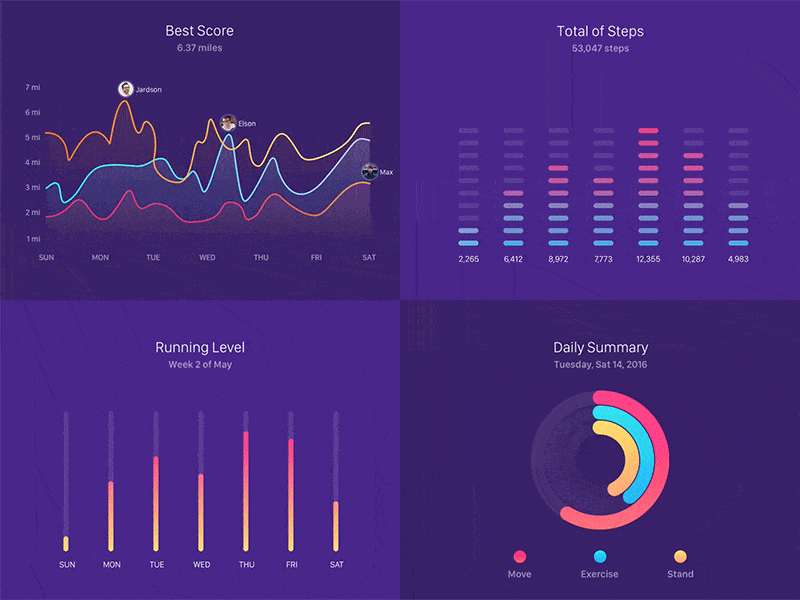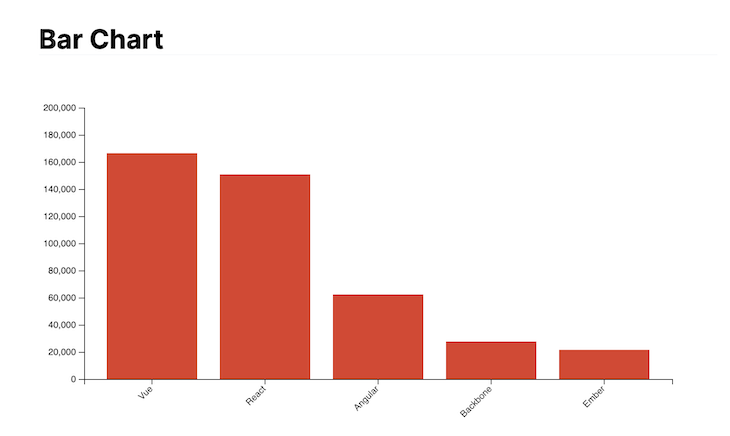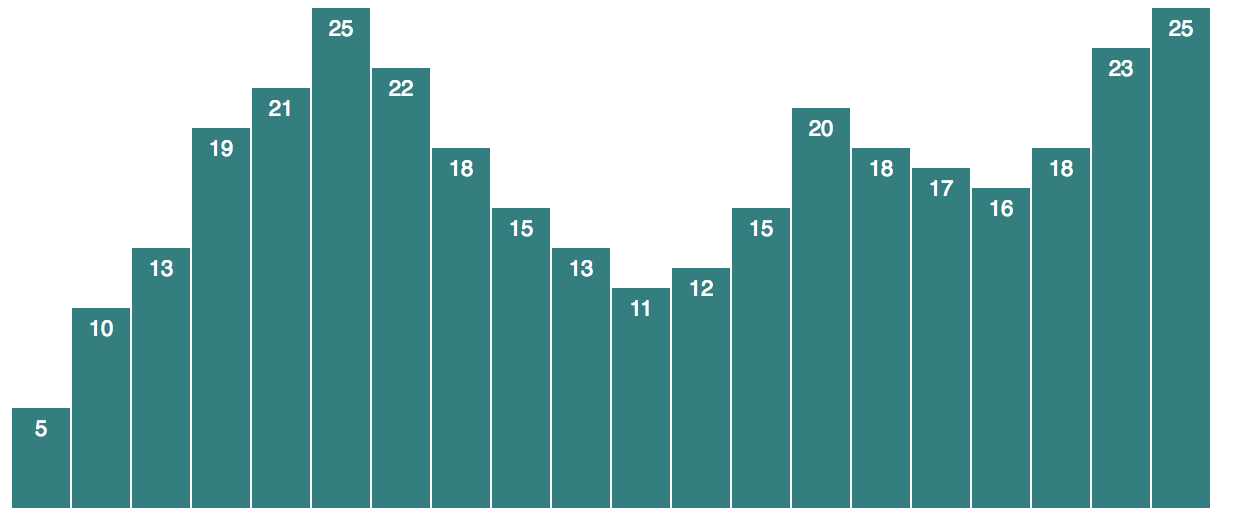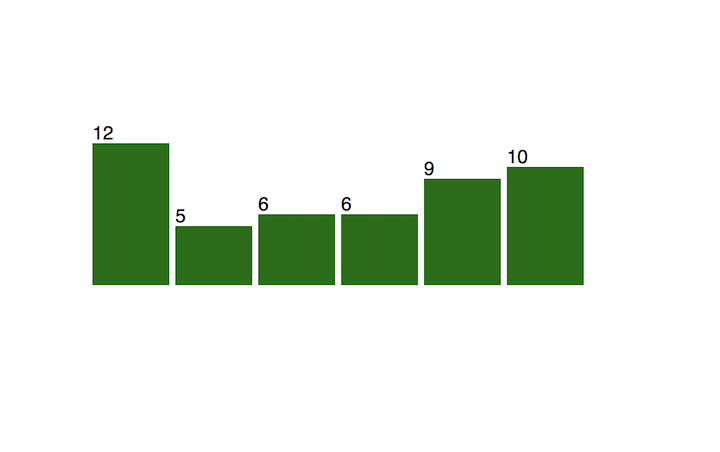D3 Bar Charts In React: A Deep Dive Into Information Visualization
D3 Bar Charts in React: A Deep Dive into Information Visualization
Associated Articles: D3 Bar Charts in React: A Deep Dive into Information Visualization
Introduction
On this auspicious event, we’re delighted to delve into the intriguing matter associated to D3 Bar Charts in React: A Deep Dive into Information Visualization. Let’s weave attention-grabbing data and supply contemporary views to the readers.
Desk of Content material
D3 Bar Charts in React: A Deep Dive into Information Visualization

React, with its component-based structure and digital DOM, has change into a dominant pressure in front-end improvement. D3.js, however, is a robust JavaScript library for manipulating the Doc Object Mannequin (DOM) to create dynamic and interactive information visualizations. Combining the strengths of each libraries permits builders to construct refined, performant, and visually interesting information visualizations inside a React software. This text will discover the intricacies of making D3 bar charts inside a React setting, masking varied facets from elementary ideas to superior strategies.
Understanding the Fundamentals: D3 and React
Earlier than diving into the implementation, let’s briefly recap the core functionalities of each libraries.
-
React: React’s major position is managing the person interface (UI). It makes use of a component-based strategy, the place UI components are damaged down into reusable parts. React’s digital DOM effectively updates the precise DOM, minimizing direct manipulation and bettering efficiency.
-
D3.js (Information-Pushed Paperwork): D3 is a robust library designed for creating information visualizations. It permits you to bind information to DOM components, remodeling information into visible representations. D3 supplies a low-level strategy, giving builders fine-grained management over each facet of the visualization.
Integrating D3 inside React requires a cautious strategy. Straight manipulating the DOM inside React parts can result in conflicts and efficiency points. Due to this fact, we typically desire to leverage React’s element lifecycle strategies and managed rendering to handle the D3 interplay.
Making a Easy D3 Bar Chart in React
Let’s begin with a fundamental instance of a D3 bar chart inside a React element. This instance will illustrate the elemental steps concerned:
import React, useRef, useEffect from 'react';
import * as d3 from 'd3';
const BarChart = ( information ) =>
const svgRef = useRef(null);
useEffect(() => information.size === 0) return;
const svg = d3.choose(svgRef.present);
const width = 500;
const top = 300;
const margin = prime: 20, proper: 20, backside: 30, left: 40 ;
const innerWidth = width - margin.left - margin.proper;
const innerHeight = top - margin.prime - margin.backside;
const xScale = d3.scaleBand()
.area(information.map(d => d.label))
.vary([0, innerWidth])
.padding(0.1);
const yScale = d3.scaleLinear()
.area([0, d3.max(data, d => d.value)])
.vary([innerHeight, 0]);
const g = svg.append("g")
.attr("rework", `translate($margin.left,$margin.prime)`);
g.selectAll("rect")
.information(information)
.enter().append("rect")
.attr("x", d => xScale(d.label))
.attr("y", d => yScale(d.worth))
.attr("width", xScale.bandwidth())
.attr("top", d => innerHeight - yScale(d.worth))
.attr("fill", "steelblue");
g.append("g")
.name(d3.axisBottom(xScale))
.attr("rework", `translate(0,$innerHeight)`);
g.append("g")
.name(d3.axisLeft(yScale));
, [data]);
return (
<svg ref=svgRef width=500 top=300></svg>
);
;
export default BarChart;This code defines a BarChart element that takes information as a prop. The useEffect hook ensures that the chart is rendered and up to date each time the info adjustments. We use D3 to create scales, axes, and rectangles representing the bars. The ref is used to entry the SVG ingredient for D3 manipulation.
Information Dealing with and Information Binding
The instance above highlights the significance of knowledge dealing with. The information prop must be an array of objects, every object representing a bar with a label (categorical information for the x-axis) and a worth (numerical information for the y-axis). As an illustration:
const information = [
label: 'A', value: 10 ,
label: 'B', value: 20 ,
label: 'C', value: 15 ,
label: 'D', value: 25
];D3’s information binding mechanism is essential. The information() technique binds the info to the chosen components. The enter() choice handles new information factors, whereas the exit() choice handles eliminated information factors, making certain clean updates.
Scales and Axes
D3 scales map information values to visible coordinates. d3.scaleBand is used for categorical information (x-axis), whereas d3.scaleLinear is used for numerical information (y-axis). D3 supplies varied axis mills (d3.axisBottom, d3.axisLeft, and so on.) to create axes based mostly on the scales.
Superior Strategies and Enhancements
The essential instance will be prolonged with quite a few enhancements:
-
Tooltips: Add tooltips to show detailed details about every bar on hover, utilizing libraries like
d3-tipor customized implementations. -
Interactive Components: Implement interactivity, similar to clicking bars to set off actions or highlighting particular bars.
-
Customized Styling: Customise the looks of the chart utilizing CSS or inline kinds, adjusting colours, fonts, and different visible components.
-
Animations: Use D3’s transition and animation capabilities to create visually interesting transitions when information updates.
-
Legends: Add a legend to elucidate the that means of various bars or colours.
-
Responsive Design: Make the chart attentive to completely different display screen sizes utilizing strategies like viewport items or responsive libraries.
-
Advanced Information Constructions: Deal with extra complicated information buildings, similar to nested information or hierarchical information, utilizing applicable D3 strategies.
-
Error Dealing with: Implement strong error dealing with to gracefully handle situations like empty information or invalid information codecs.
-
Information Fetching: Combine information fetching mechanisms to retrieve information from exterior sources like APIs.
Instance with Tooltips and Animations:
Integrating tooltips and animations considerably enhances the person expertise. This requires further libraries and extra complicated D3 code:
// ... (Import d3-tip) ...
const BarChart = ( information ) =>
// ... (earlier code) ...
useEffect(() =>
// ... (earlier code) ...
const tip = d3.tip()
.attr('class', 'd3-tip')
.offset([-10, 0])
.html(d => `$d.label: $d.worth`);
g.name(tip);
g.selectAll("rect")
.information(information)
.enter().append("rect")
// ... (earlier attributes) ...
.on('mouseover', tip.present)
.on('mouseout', tip.conceal)
.transition()
.period(750)
.attr("fill", "steelblue"); //Instance of animation
// ... (remainder of the code) ...
, [data]);
return (
// ... (remainder of the code) ...
);
;This improved instance provides tooltips utilizing d3-tip and a easy transition for the bar fill.
Conclusion:
Combining D3.js and React supplies a robust strategy to creating refined and interactive information visualizations. Whereas D3 affords low-level management, React’s element structure and environment friendly rendering make the method manageable and scalable. By understanding the basics of each libraries and leveraging superior strategies, builders can construct visually interesting and informative bar charts that successfully talk information insights. Bear in mind to rigorously handle DOM manipulation inside React’s lifecycle strategies to keep away from conflicts and preserve efficiency. With apply and exploration, you possibly can create compelling information visualizations that improve your React purposes. This text serves as a place to begin; additional exploration of D3’s documentation and examples will unlock the total potential of this highly effective mixture.








Closure
Thus, we hope this text has supplied useful insights into D3 Bar Charts in React: A Deep Dive into Information Visualization. We thanks for taking the time to learn this text. See you in our subsequent article!